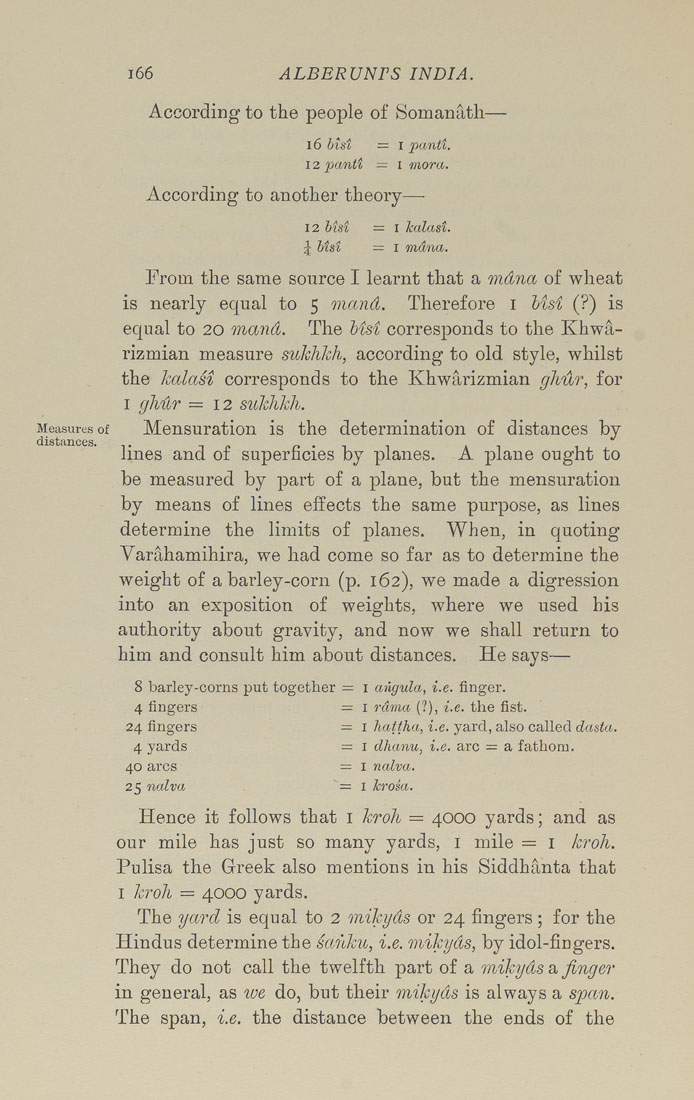Bīrūnī, Muḥammad ibn Aḥmad, Alberuni's India (v. 1)
(London : Kegan Paul, Trench, Trübner & Co., 1910.)
|
||
|
|
|
|
| Page 166 |

i66 ALBERUNPS INDIA. According to the people of Somanath— 16 hist = I pantt. 12 piantt = I mora. According to another theory— 12 hist = I kalast. J^ htst = I mdna. From the same source I learnt that a mdna of wheat is nearly equal to 5 mand. Therefore i bisi (?) is equal to 20 mand. The hisi corres|)onds to the Khwa- rizmian measure sukhkh, according to old style, whilst the kalasi corresponds to the Khwarizmian ghUr, for I ghur —12 sukhkh. Measures of Mcusuration is the determination of distances by distances. ,. -ic n • i ^ \ ^ lines and ot superfacies by planes, A plane ought to be measured by part of a plane, but the mensuration by means of lines effects the same purpose, as lines determine the limits of planes. When, in quoting Varahamihira, we had come so far as to determine the weight of a barley-corn (p. 162), we made a digression into an exposition of weights, where we used his authority about gravity, and now we shall return to him and consult him about distances. He says— 8 barley-corns put together = i angula, i.e. finger. 4 fingers = l rdma (?), i.e. the fist. 24 fingers — i hattha, i.e. yard, also called dasta. 4 yards = i dhanu, i.e. arc — a fathom. 40 arcs = I nalva. 25 nalva = I kroki. Hence it follows that i kroh = 4000 yards; and as our mile has just so many yards, i mile = i kroh. Pulisa the Greek also mentions in his Siddhanta that I kroh = 4000 yards. The ycco'd is equal to 2 mikyds or 24 fingers; for the Hindus determine the saiiku, i.e. onikyds, by idol-fingers. They do not call the twelfth part of a mikyds a finger in general, as we do, but their onikyds is always a span. The span, i.e. the distance hetween the ends of the |
| Page 166 |







